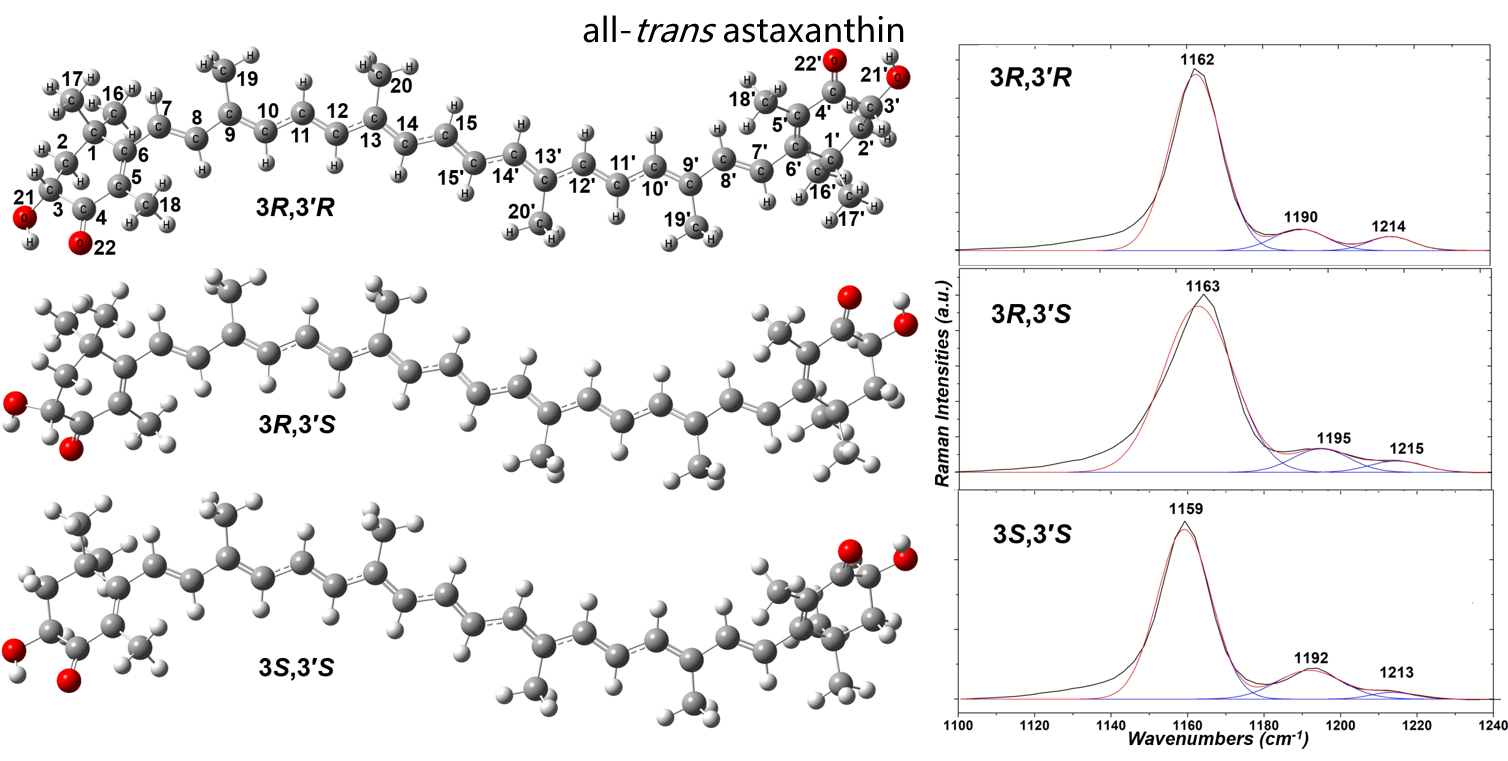
Astaxanthin (AST), distributed widely in aquatic animals, protects against oxidative stress, various diseases, and age-related degeneration. Many studies have shown AST with different chirality has different biological activities and functions, so it’s important to identify the chirality of AST. High performance liquid chromatography is generally used, but the analysis takes a long time and requires a relatively large amount of sample. Therefore, it is necessary to explore new technologies for identifying the chirality of AST.
Recently, a research team led by HUANG Qing from the Institute of Intelligent Machines, Hefei Institutes of Physical Science (HFIPS), Chinese Academy of Sciences (CAS) developed a convenient method to distinguish the chiral biological macromolecules with polymorphic forms by using Raman spectroscopy, such as astaxanthin.
This research team employed Raman spectroscopy to propose a method to distinguish between 3S,3′S, 3R,3′R, and meso all-trans AST. They obtained the chiral AST from their collaborators from Institute of Oceanology, CAS, and found that the relative Raman intensities of different chiral astaxanthins at the 1190 cm-1 and 1215 cm-1 bands were different. The analysis of Raman intensity can quickly identify the three chiral isomers of AST. Combining calculation and analysis, it is speculated that these three chiral AST are in different crystal forms due to different intermolecular interactions. Since the conformations of the three molecules no longer maintain mirror symmetry, the Raman spectra are different.
This research was funded by the National Natural Science Foundation of China and the Natural Science Foundation of Anhui Province.
Link to the paper: DFT and Raman study of all-trans astaxanthin optical isomers

The structures and Raman spectra of three chiral astaxanthins (Image by YAO Guohua)
Contact:
ZHAO Weiwei
Hefei Institutes of Physical Science (http://english.hf.cas.cn/)
Email: annyzhao@ipp.ac.cn